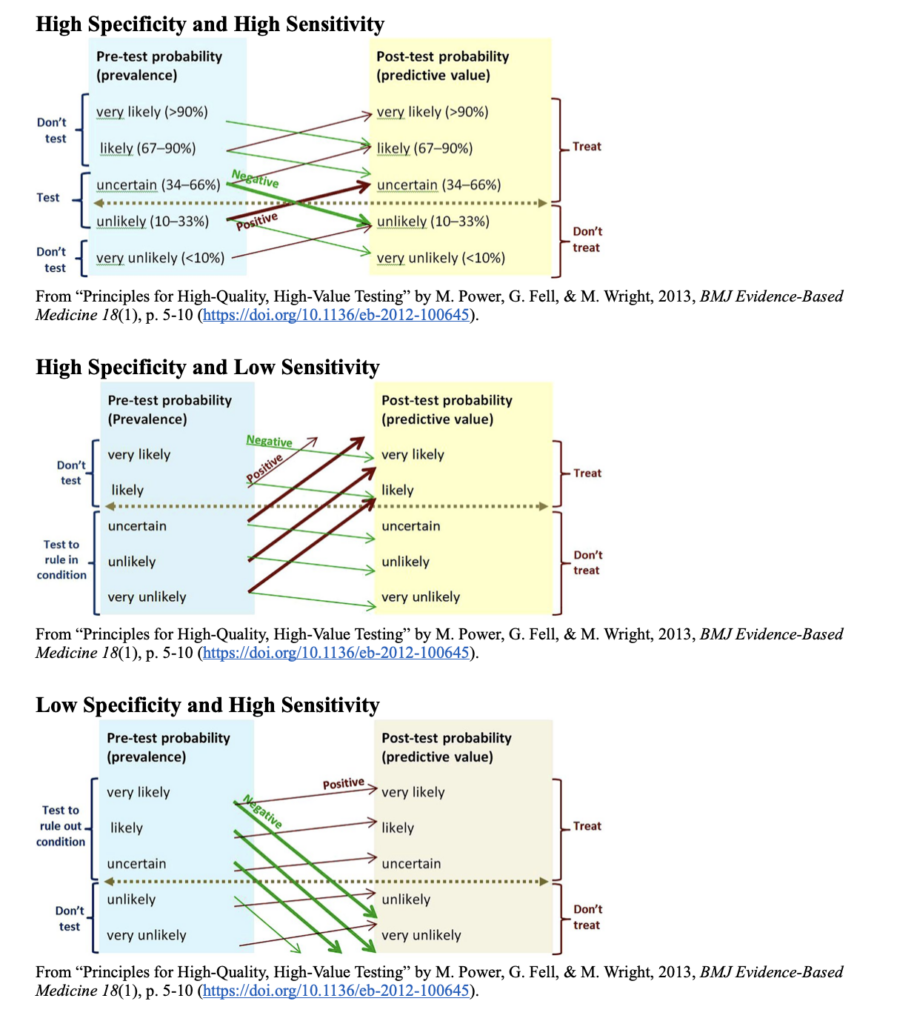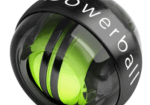Sensitivity and Specificity in Thoracic Outlet Syndrome (TOS) Tests in Hand Therapy
Filed under Treatments
By: Mikayla Murphy
Sensitivity and Specificity in Thoracic Outlet Syndrome (TOS) Tests in Hand Therapy
Thoracic outlet syndrome (TOS) describes the compression of nerves, arteries, and veins as they pass through the thoracic outlet. Compression can occur at the interscalene triangle, the costoclavicular triangle, and the subcoracoid space (Physiopedia, n.d.). There are three types of TOS – neurogenic, venous, and arterial – each based on what structure is being compressed, with neurogenic TOS being by far the most common (Jones et al., 2019). Symptoms of thoracic outlet vary based on the type but can include paresthesia in the upper extremity, weakness, changes in color, and pain (National Institute for Neurological Disorders and Stroke, n.d.). TOS can have multiple causes, including differences in anatomy, trauma, and repetitive movement (Jones et al., 2019).
Special tests can help a therapist determine if a patient has possible thoracic outlet syndrome and can inform care. When looking at special tests, it is important to consider their specificity and sensitivity. Specificity refers to a test’s ability to correctly identify someone without the disease, while sensitivity refers to a test’s ability to correctly identify someone with the disease (New York State Department of Health, 1999). Gillard et al. (2001) lists the following sensitivity and specificities for several common TOS tests:
Test Specificity Sensitivity

Power et al. (2013) offer three diagrams to assist with interpreting results of a test based on their pre-test probability, specificity, and sensitivity. Pre-test probability is a therapist’s estimate on whether or not a patient may have a condition based on the therapist’s clinical reasoning (The NNT Group, n.d.). In each of the diagrams, thicker lines mean the result is more likely to change how the condition is managed. Power et al. (2013) also suggest some pre-test probabilities should not be tested if testing will not change the way the condition is managed; however, their results are geared towards doctors whose testing may be more costly or invasive than simple provocative tests. Based on the pre-test probability, a therapist can use these diagrams to estimate the likelihood of a patient having a condition.
For example, Roos test has a low specificity and high sensitivity. If a therapist is uncertain whether a client has TOS, and the client has a positive result, it is still uncertain whether the client has TOS. However, if the client has a negative result, it is very unlikely the client has TOS. Using several tests in combination will provide more accurate results, such as Adson’s with Roos or Wright’s (Gillard et al., 2001; Power et al., 2013).
High Specificity and High Sensitivity
From “Principles for High-Quality, High-Value Testing” by M. Power, G. Fell, & M. Wright, 2013, BMJ Evidence-Based Medicine 18(1), p. 5-10 (https://doi.org/10.1136/eb-2012-100645).
High Specificity and Low Sensitivity
From “Principles for High-Quality, High-Value Testing” by M. Power, G. Fell, & M. Wright, 2013, BMJ Evidence-Based Medicine 18(1), p. 5-10 (https://doi.org/10.1136/eb-2012-100645).
Low Specificity and High Sensitivity
From “Principles for High-Quality, High-Value Testing” by M. Power, G. Fell, & M. Wright, 2013, BMJ Evidence-Based Medicine 18(1), p. 5-10 (https://doi.org/10.1136/eb-2012-100645).

References
Gillard, J., Pérez-Cousin, M., Hachulla, É., Remy, J., Hurtevent, J.F., Vinckier, L., Thévenon, A., & Duquesnoy, B. (2001). Diagnosing thoracic outlet syndrome: contribution of provocative tests, ultrasonography, electrophysiology, and helical computed tomography in 48 patients. Joint Bone Spine, 68(5), 416-424. https://doi.org/10.1016/S1297-319X(01)00298-6
Jones, M. R., Prabhakar, A., Viswanath, O., Urits, I., Green, J. B., Kendrick, J. B., Brunk, A. J., Eng, M. R., Orhurhu, V., Cornett, E. M., & Kaye, A. D. (2019). Thoracic outlet syndrome: A
comprehensive review of pathophysiology, diagnosis, and treatment. Pain and Therapy, 8(1), 5–18. https://doi.org/10.1007/s40122-019-0124-2
National Institute for Neurological Disorders and Stroke. (n.d.). Thoracic outlet syndrome. https://www.ninds.nih.gov/health-information/disorders/thoracic-outlet-syndrome
New York State Department of Health. (1999). Disease screening – Statistics teaching tools. https://www.health.ny.gov/diseases/chronic/discreen.htm
Power, M., Fell, G., & Wright, M. (2013). Principles for high-quality, high-value testing. BMJ Evidence-Based Medicine 18(1), 5-10. https://doi.org/10.1136/eb-2012-100645
Physiopedia. (n.d.). Thoracic outlet syndrome (TOS). https://www.physio-pedia.com/Thoracic_Outlet_Syndrome_(TOS)
The NNT Group. (n.d.) Diagnostics and likelihood ratios, explained. theNNT. https://thennt.com/diagnostics-and-likelihood-ratios-explained/
More To Read
Changes in ROM of the MCP after Trapeziometacarpal Arthrodesis
Rapid Review: Changes in ROM of the MCP after Trapeziometacarpal Arthrodesis Hayashi, M., Kato, H., Komatsu, M., Yamazaki, H., Uchiyama, S., & Takahashi, J. (2021). Changes in the Functional Range of Motion of the Thumb Metacarpophalangeal Joint After Trapeziometacarpal Arthrodesis for Patients With Advanced Trapeziometacarpal Osteoarthritis. The Journal of hand surgery, S0363-5023(21)00613-4. Advance online publication. https://doi.org/10.1016/j.jhsa.2021.09.018. The Skinny: Several published…
Read MoreIncrease Shoulder Range by Improving Scapulohumeral Rhythm
Scapulohumeral rhythm is often the key component when treating shoulder conditions and the lack of total shoulder range of motion. This may also be a critical component to prevent shoulder conditions during the rehabilitation of other upper extremity conditions such as distal radius fractures, tendon injuries, and elbow injuries. Scapulohumeral rhythm is the rhythm in…
Read MoreWrist Proprioception Ideas for Hand Therapy
Wrist Proprioception Intervention Ideas: By Ammie Ingwaldson Lack of wrist proprioception exercises can affect clients in the hand therapy setting with neurological and musculoskeletal conditions. Proprioception limitations are found in common conditions such as carpal tunnel syndrome, distal radius fracture, and CRPS (Valdes, Naughton & Algar, 2014). Proprioception is necessary during daily tasks to provide…
Read MoreWhich orthosis design is better for zone 5-6 extensor tendon injuries, a relative motion orthosis compared to a dynamic extension orthosis?
M. Buhler, ˝ D. Gwynne-Jones, M. Chin et al., (2023) Are the outcomes of relative motion extension orthoses noninferior and cost-effective compared with dynamic extension orthoses for management of zones V-VI finger extensor tendon repairs: A randomizedcontrolledtrialJournalofHandTherapy. The Skinny: The aim of this study was to compare the data for two different types of orthoses…
Read MoreSign-up to Get Updates Straight to Your Inbox!
Sign up with us and we will send you regular blog posts on everything hand therapy, notices every time we upload new videos and tutorials, along with handout, protocols, and other useful information.






